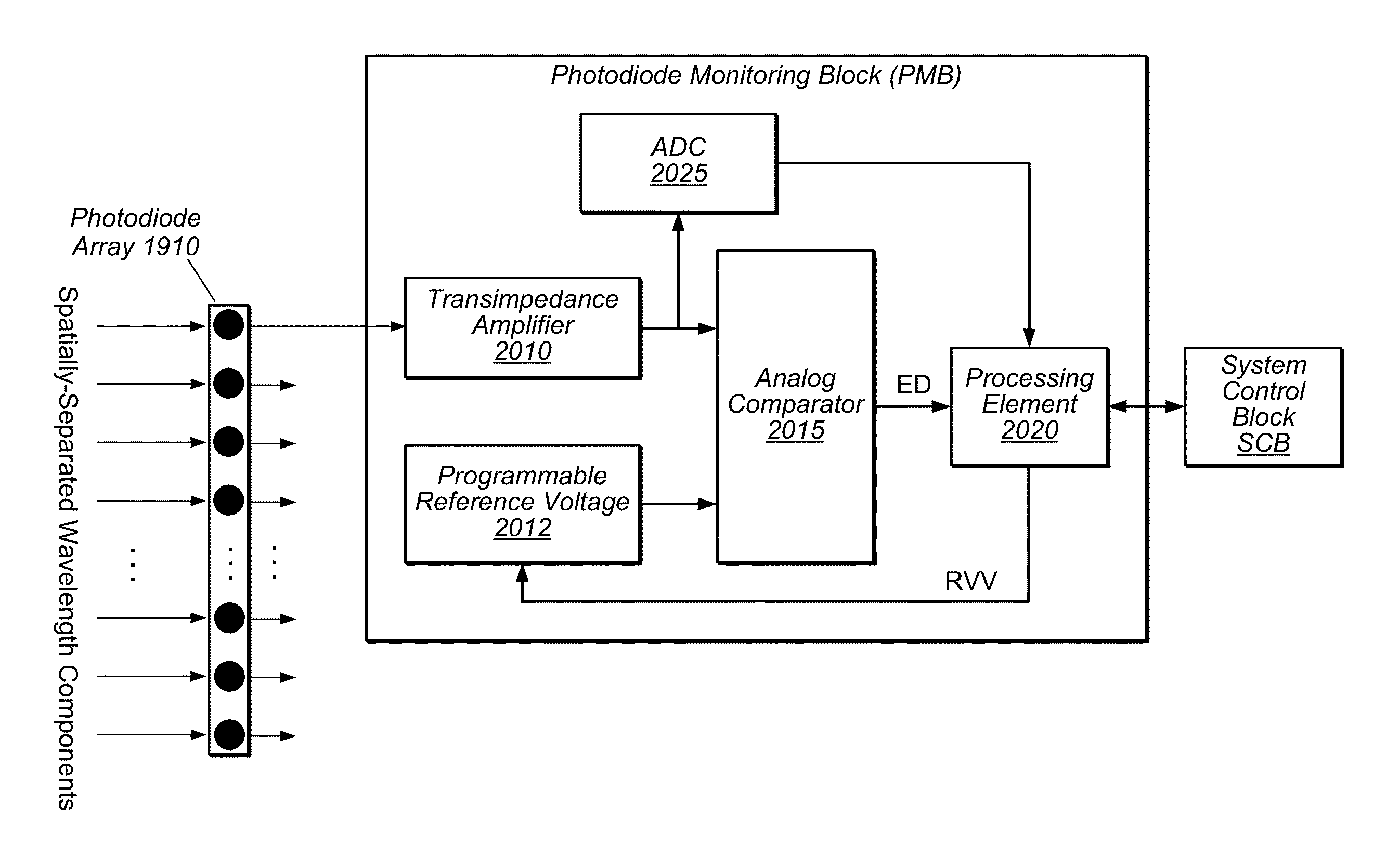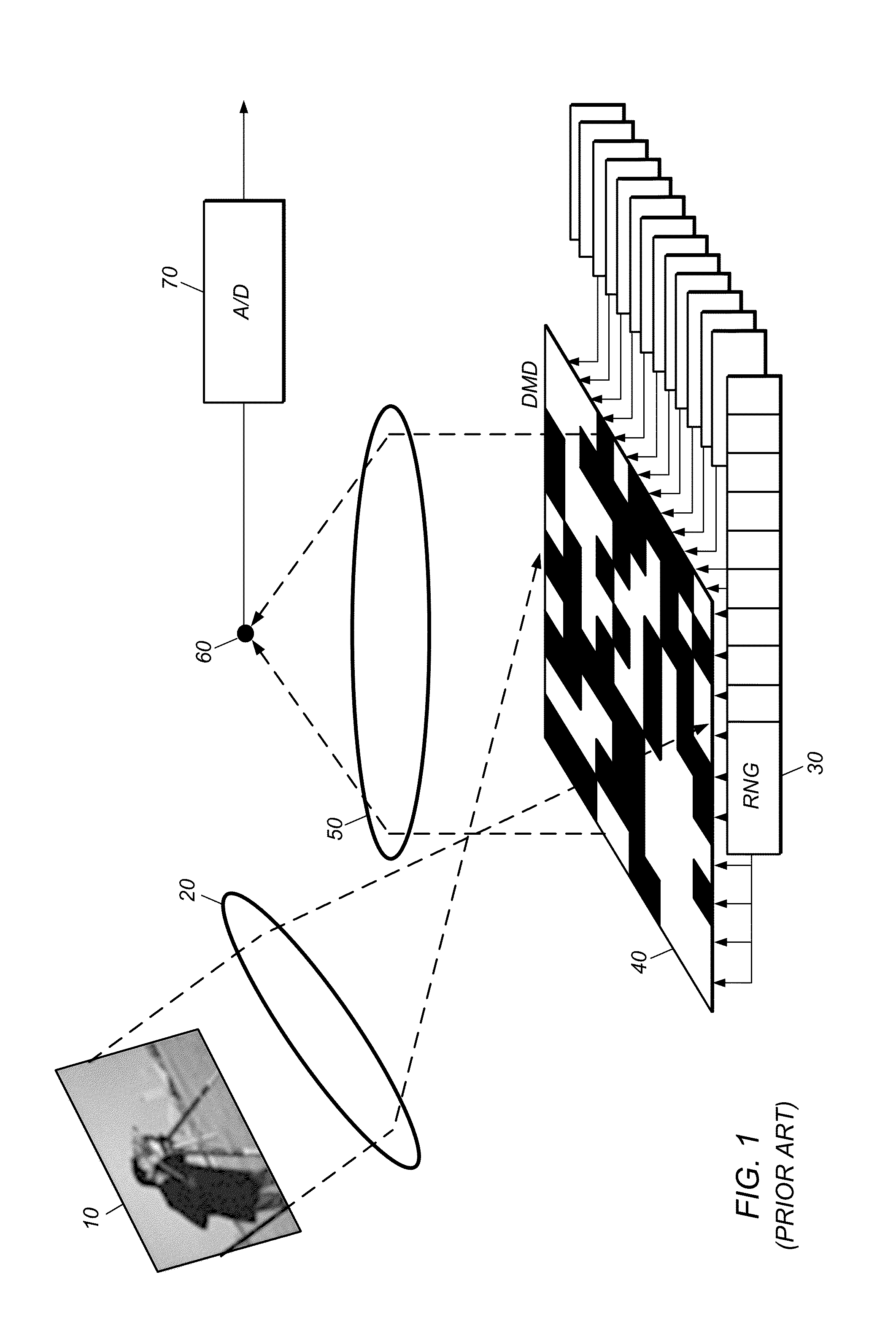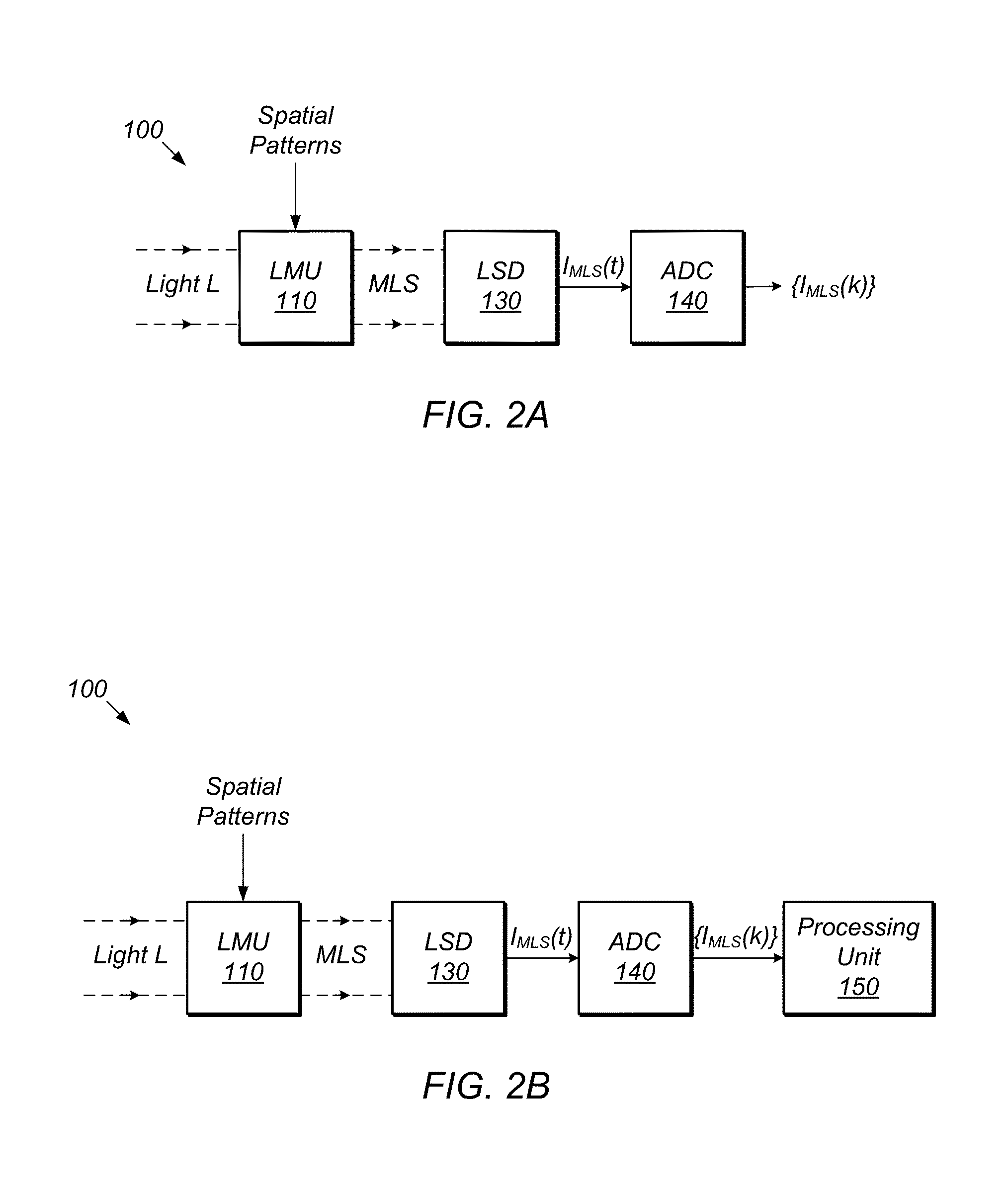High-speed event detection using a compressive-sensing hyperspectral-imaging architecture
a hyperspectral imaging and event detection technology, applied in the field of compressive imaging, can solve the problems of large number of samples generated, overwhelming data volume, detection of events such as explosions, gun discharges and chemical reactions, and achieve the effect of quick focus and quick interpretation and understanding of events
- Summary
- Abstract
- Description
- Claims
- Application Information
AI Technical Summary
Benefits of technology
Problems solved by technology
Method used
Image
Examples
Embodiment Construction
Incorporations by Reference
[0084]The following patent applications are hereby incorporated by reference in their entireties as though fully and completely set forth herein.
[0085]U.S. patent application Ser. No. 13 / 631,626, filed on Sep. 28, 2012, entitled “Adaptive Search for Atypical Regions in Incident Light Field and Spectral Classification of Light in the Atypical Regions”, invented by Richard G. Baraniuk and Tyler H. Weston;
[0086]U.S. patent application Ser. No. 13 / 534,414, filed on Jun. 27, 2012, entitled “Image Sequence Reconstruction based on Overlapping Measurement Subsets”, invented by James M. Tidman, Tyler H. Weston, Matthew A. Herman and Lenore McMackin;
[0087]U.S. patent application Ser. No. 13 / 534,528, filed on Jun. 27, 2012, entitled “Mechanisms for Conserving Power in a Compressive Imaging System”, invented by Robert F. Bridge, James M. Tidman, Lenore McMackin and Sujoy Chatterjee;
[0088]U.S. patent application Ser. No. 13 / 534,249, filed on Jun. 27, 2012, entitled “Us...
PUM
 Login to View More
Login to View More Abstract
Description
Claims
Application Information
 Login to View More
Login to View More - R&D
- Intellectual Property
- Life Sciences
- Materials
- Tech Scout
- Unparalleled Data Quality
- Higher Quality Content
- 60% Fewer Hallucinations
Browse by: Latest US Patents, China's latest patents, Technical Efficacy Thesaurus, Application Domain, Technology Topic, Popular Technical Reports.
© 2025 PatSnap. All rights reserved.Legal|Privacy policy|Modern Slavery Act Transparency Statement|Sitemap|About US| Contact US: help@patsnap.com



